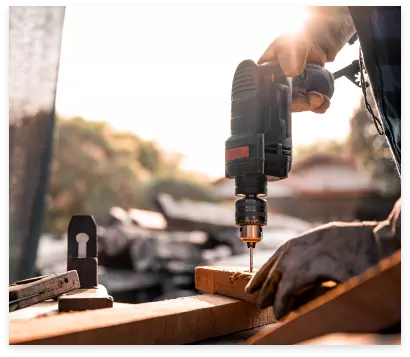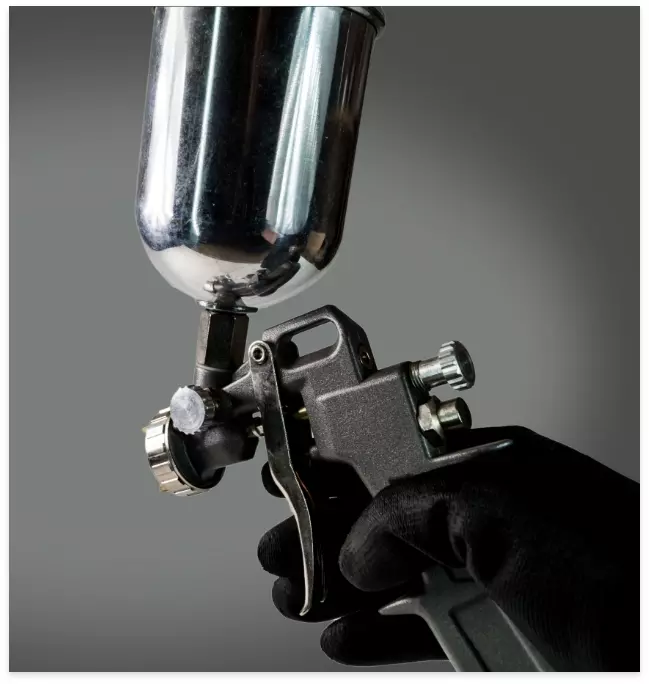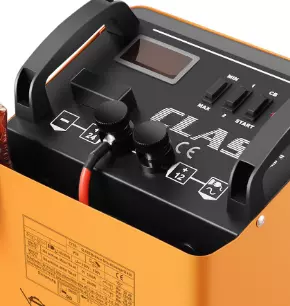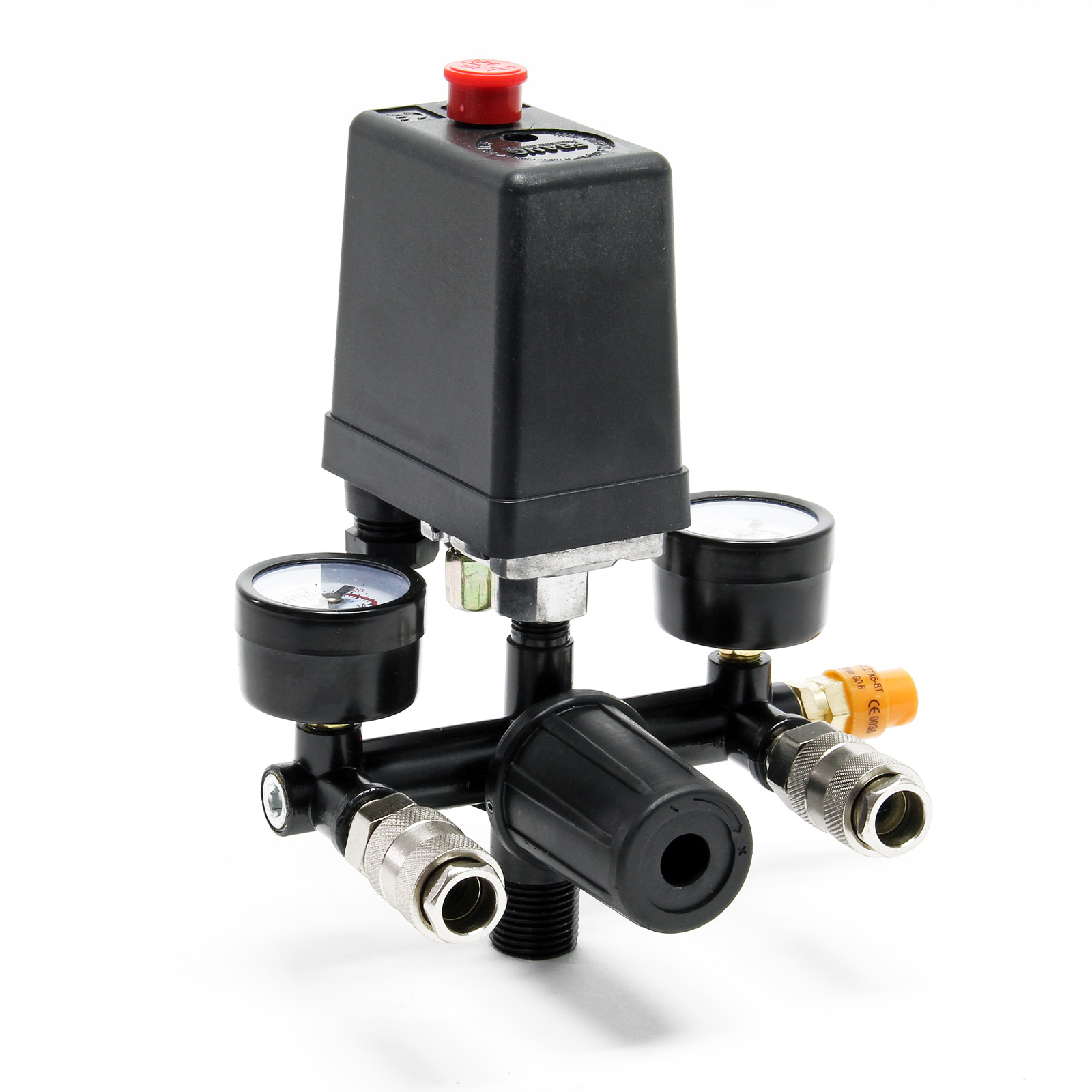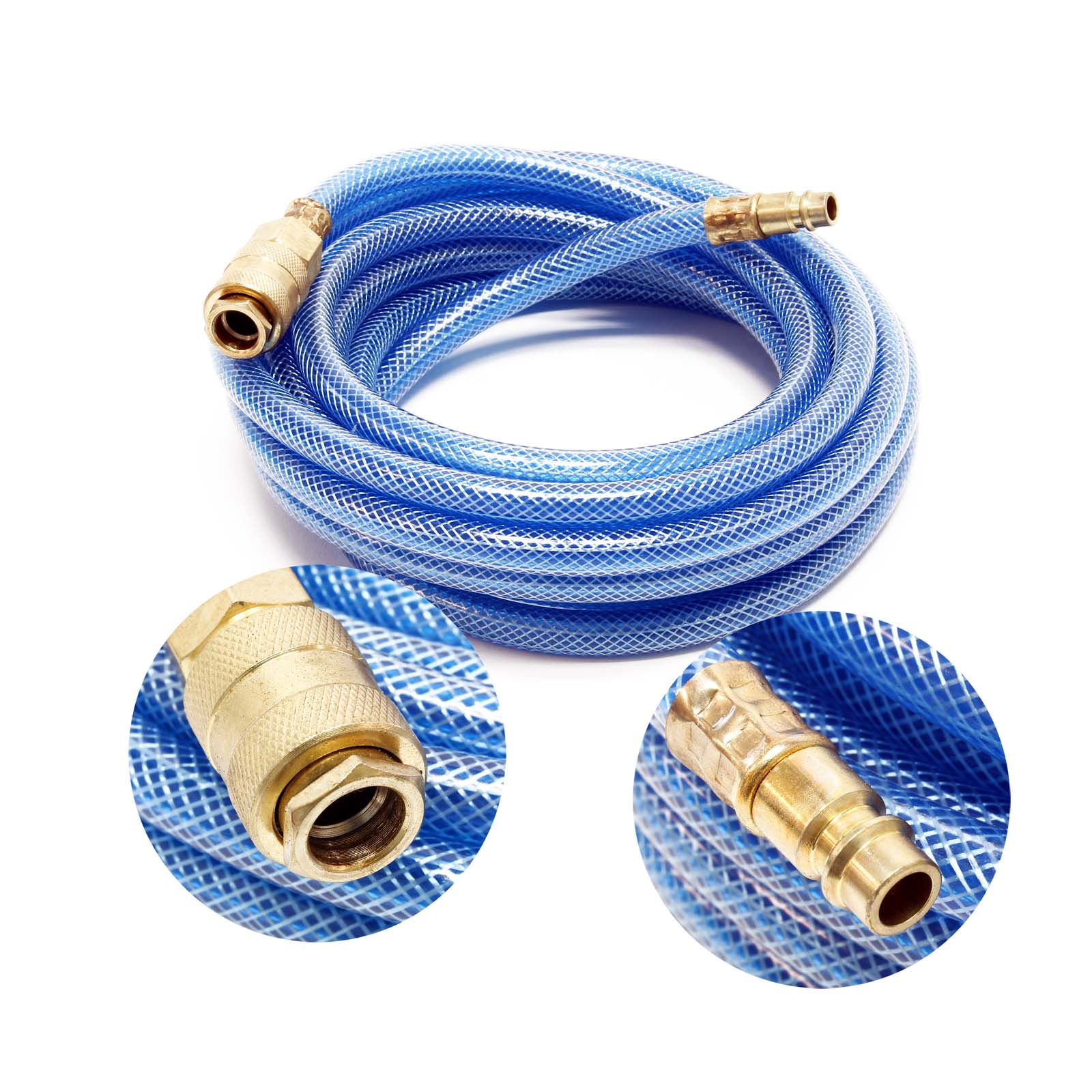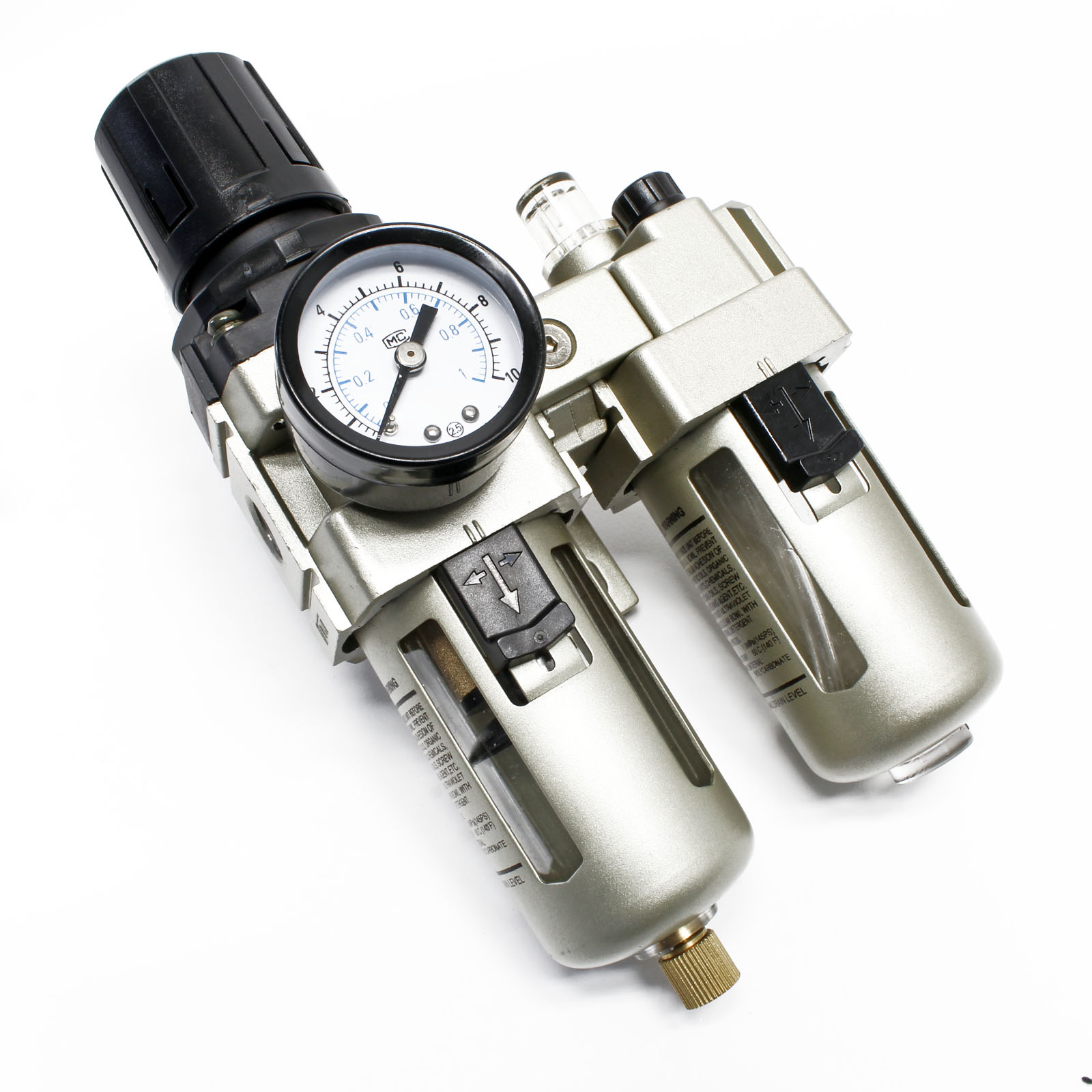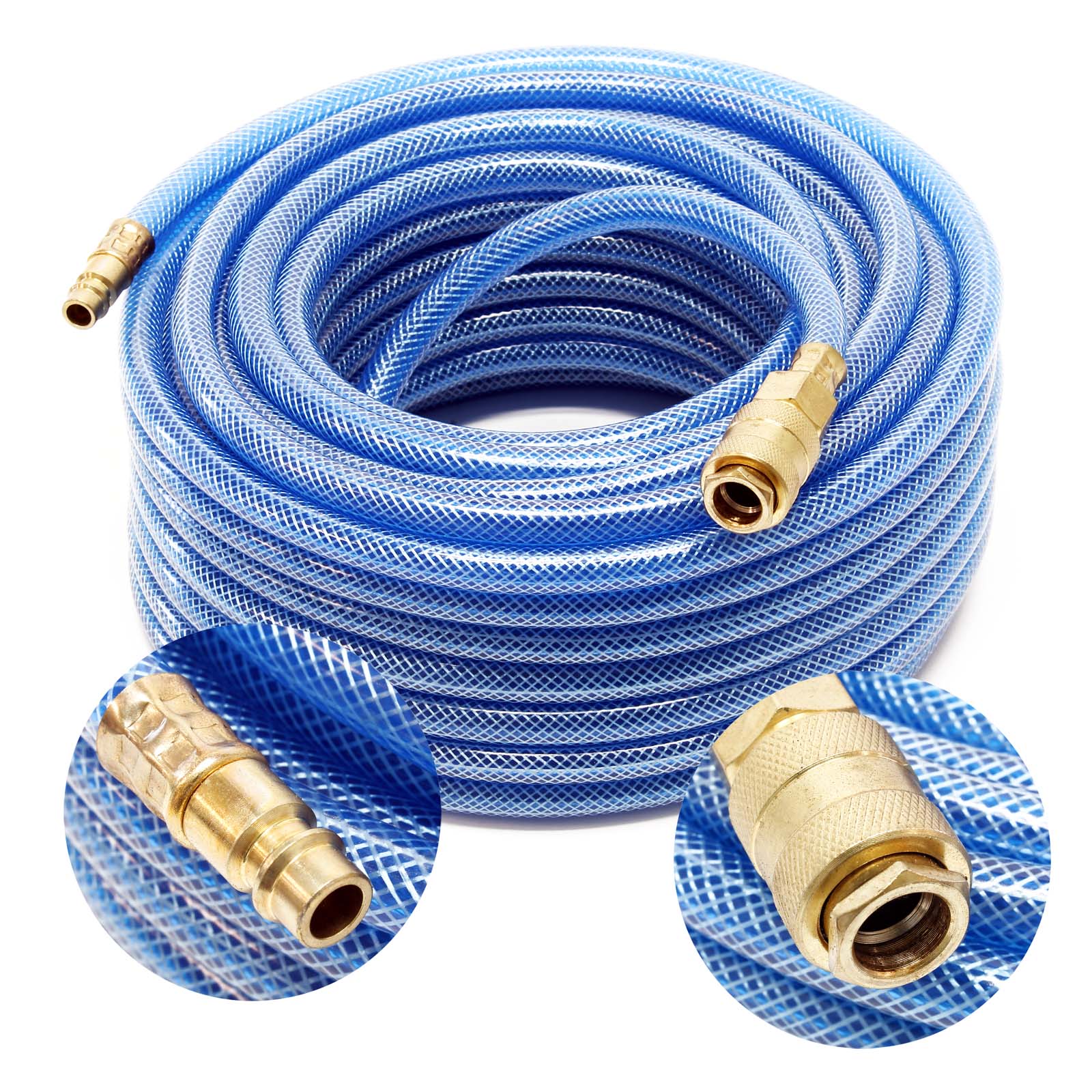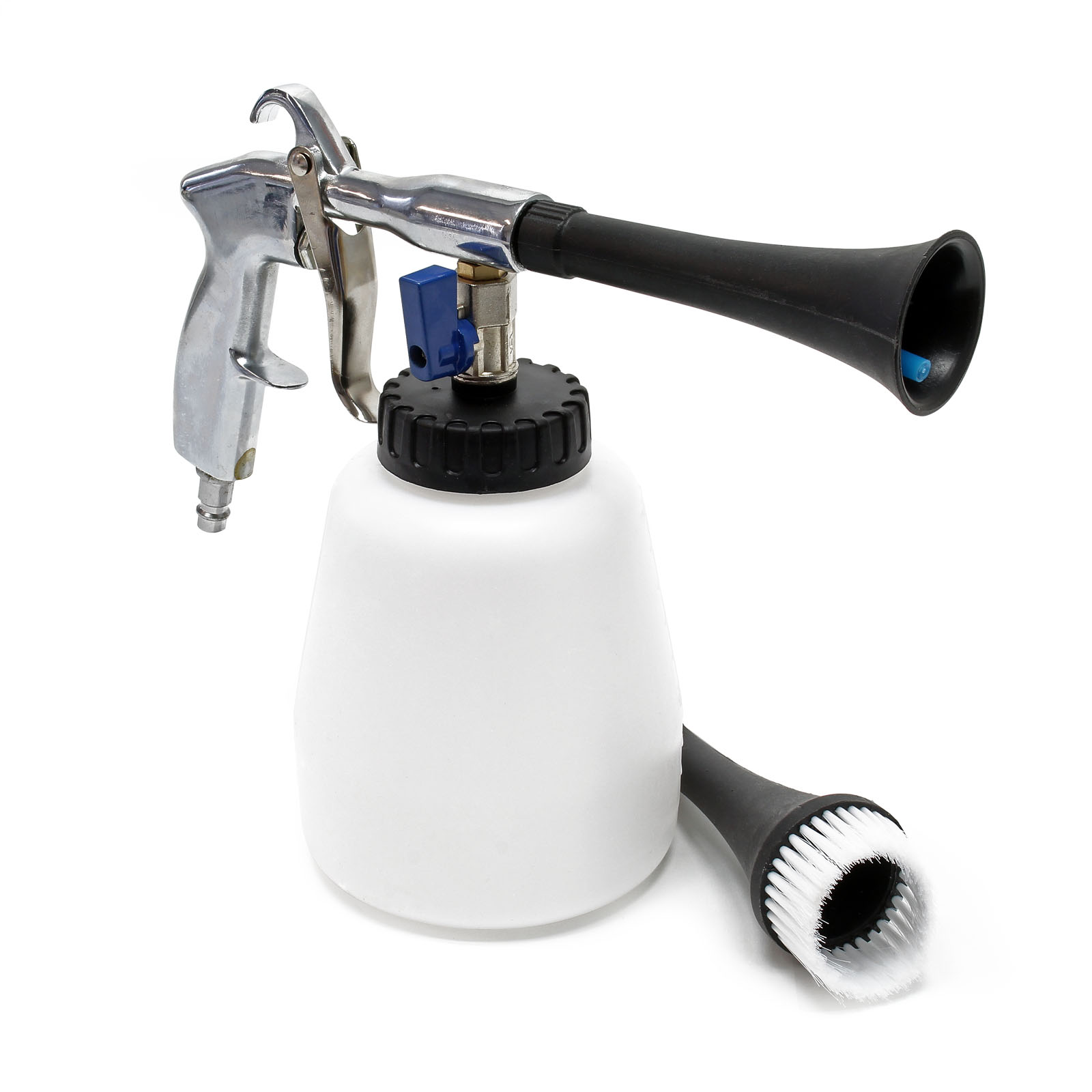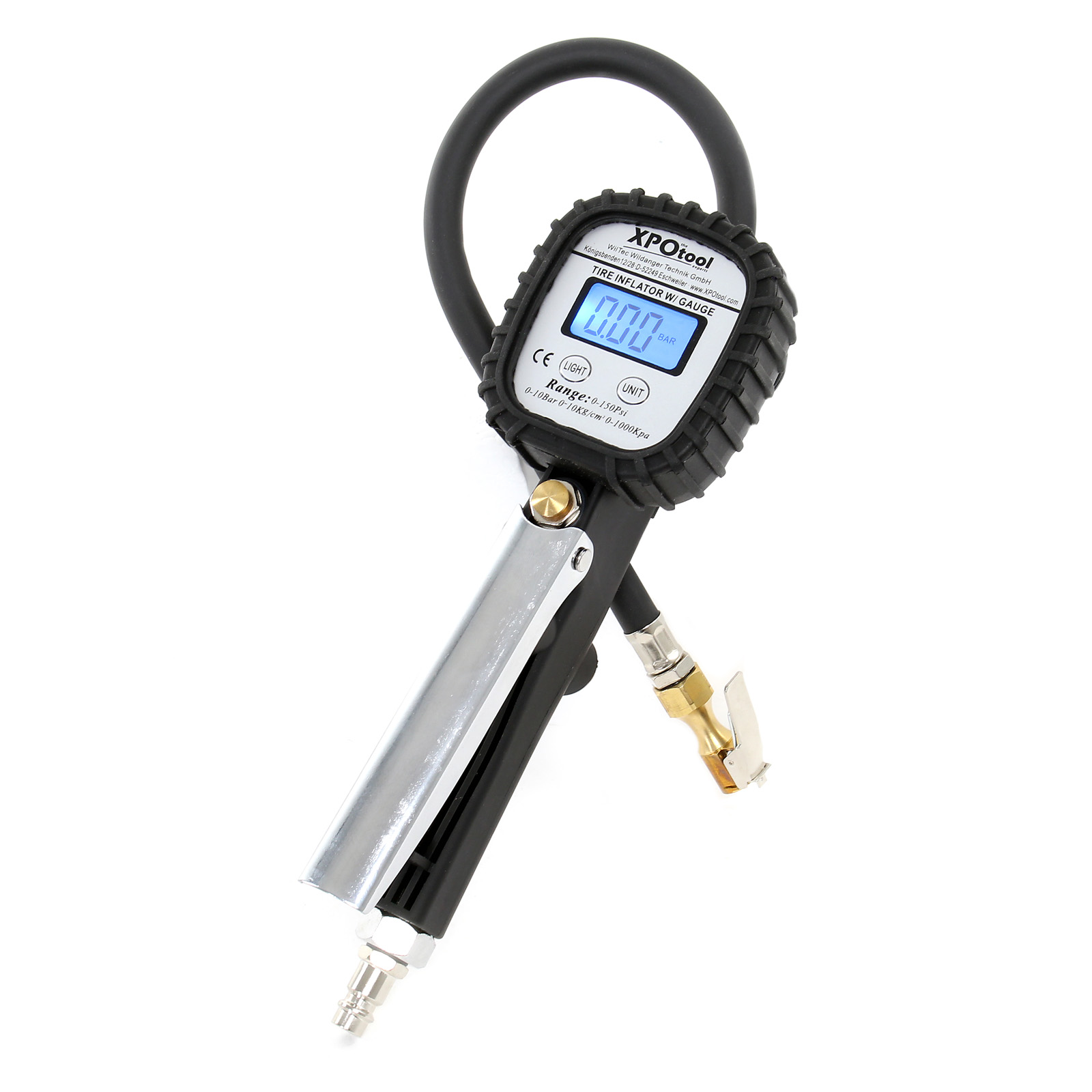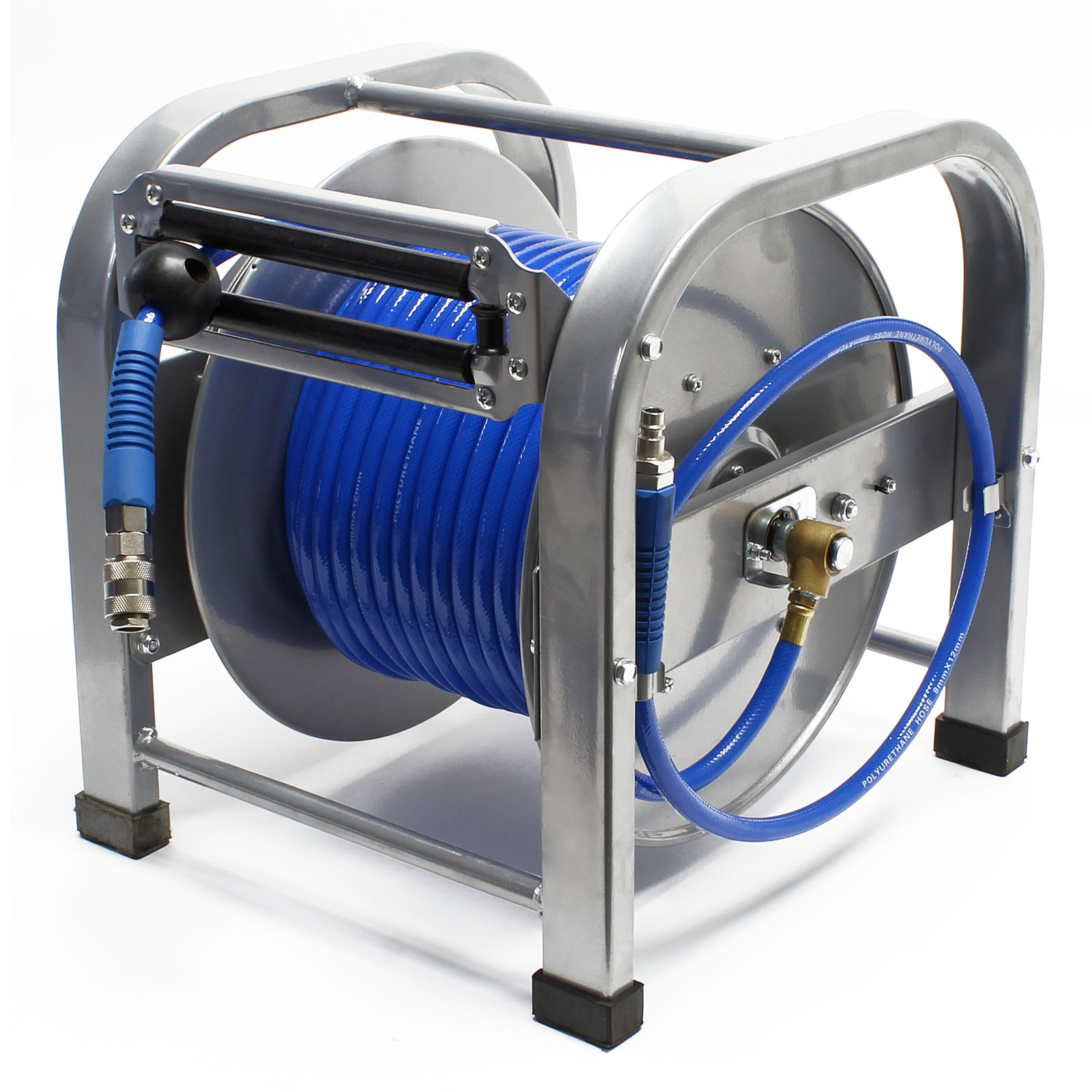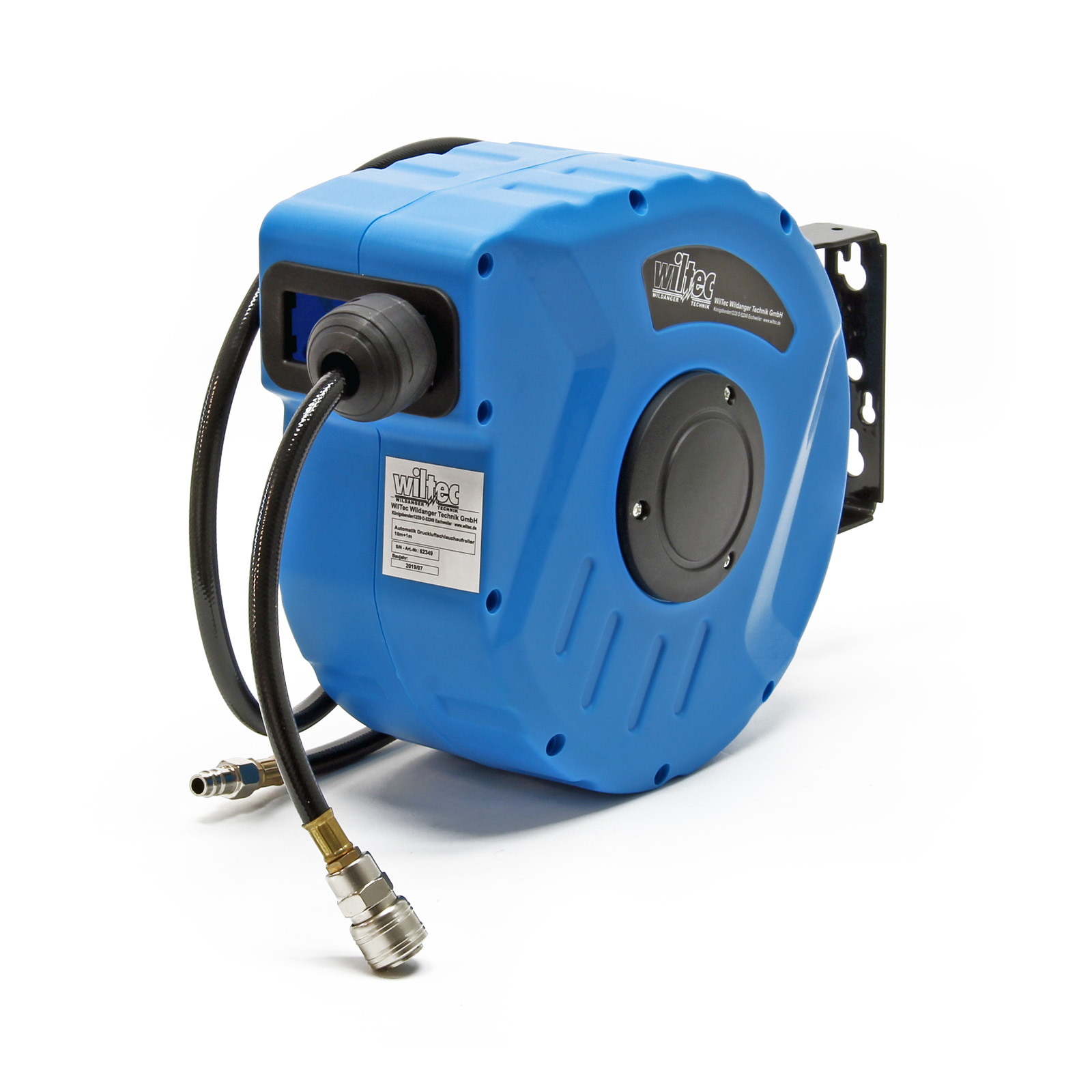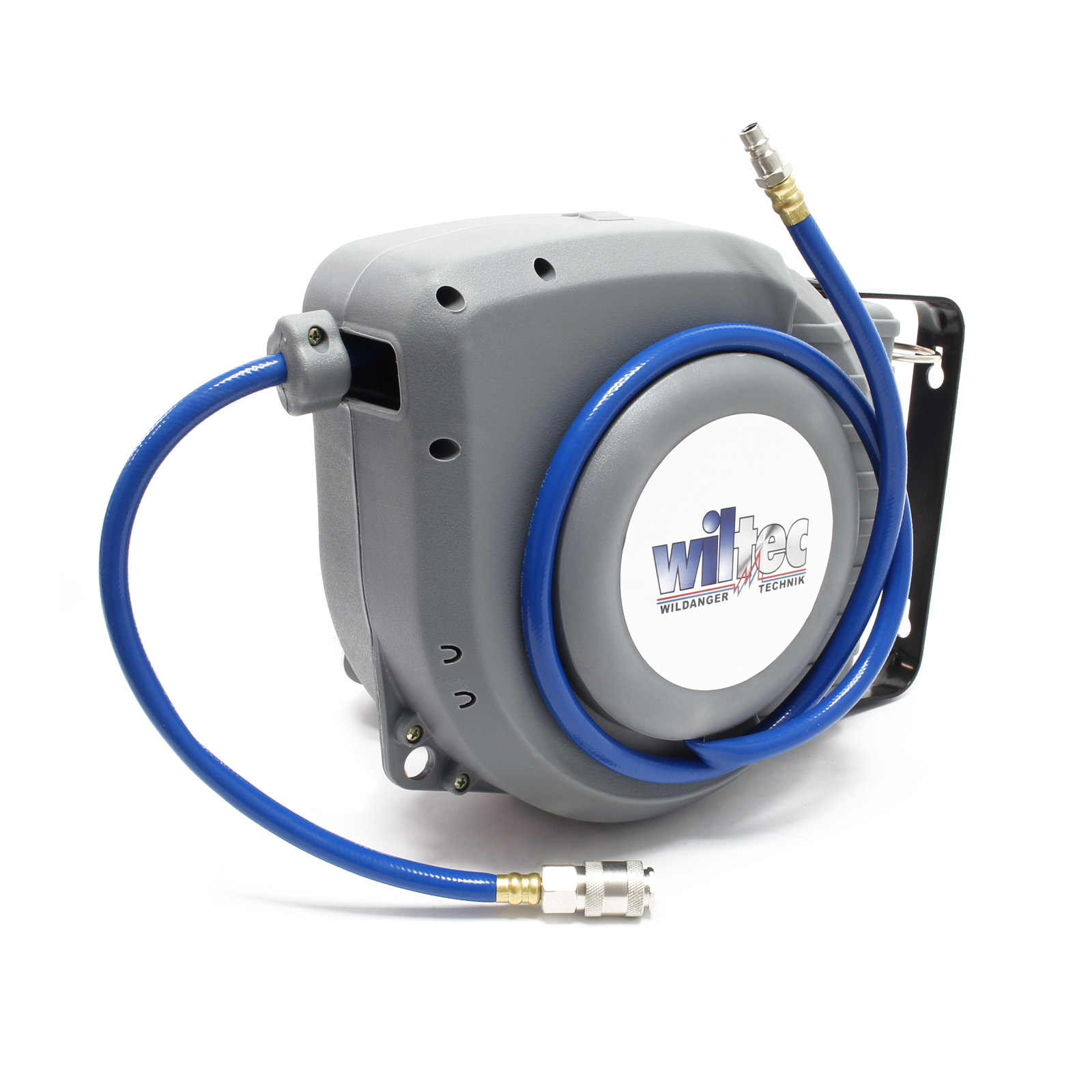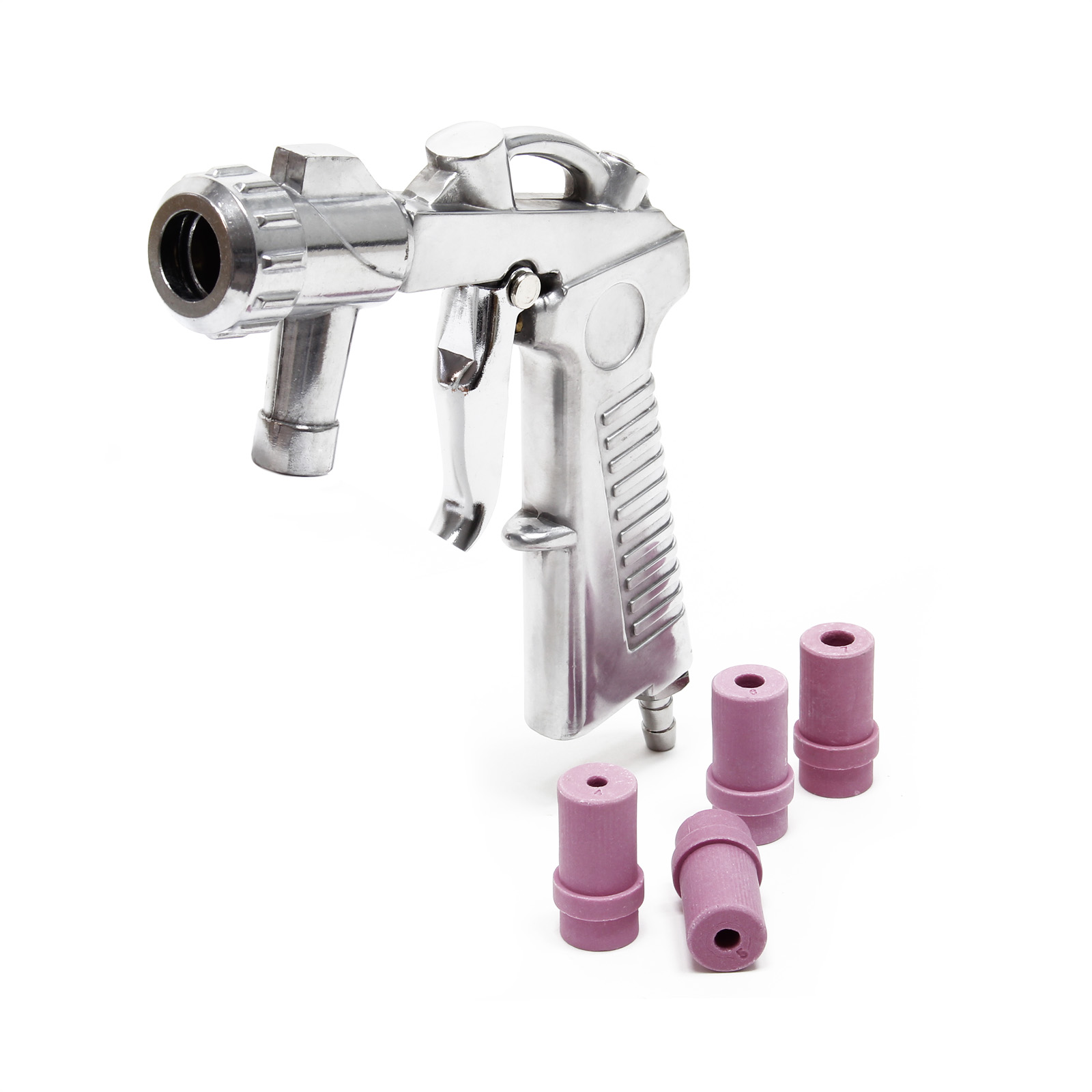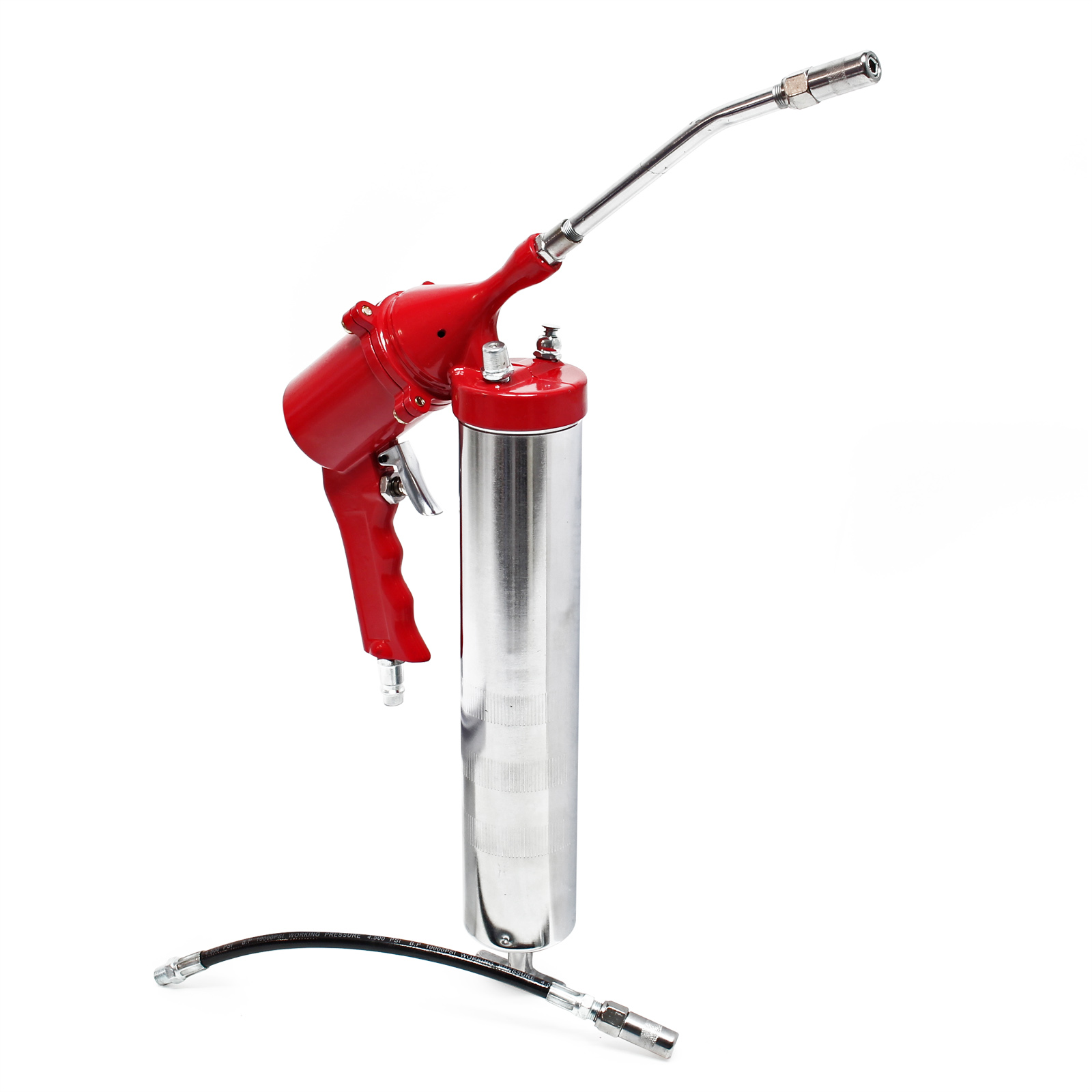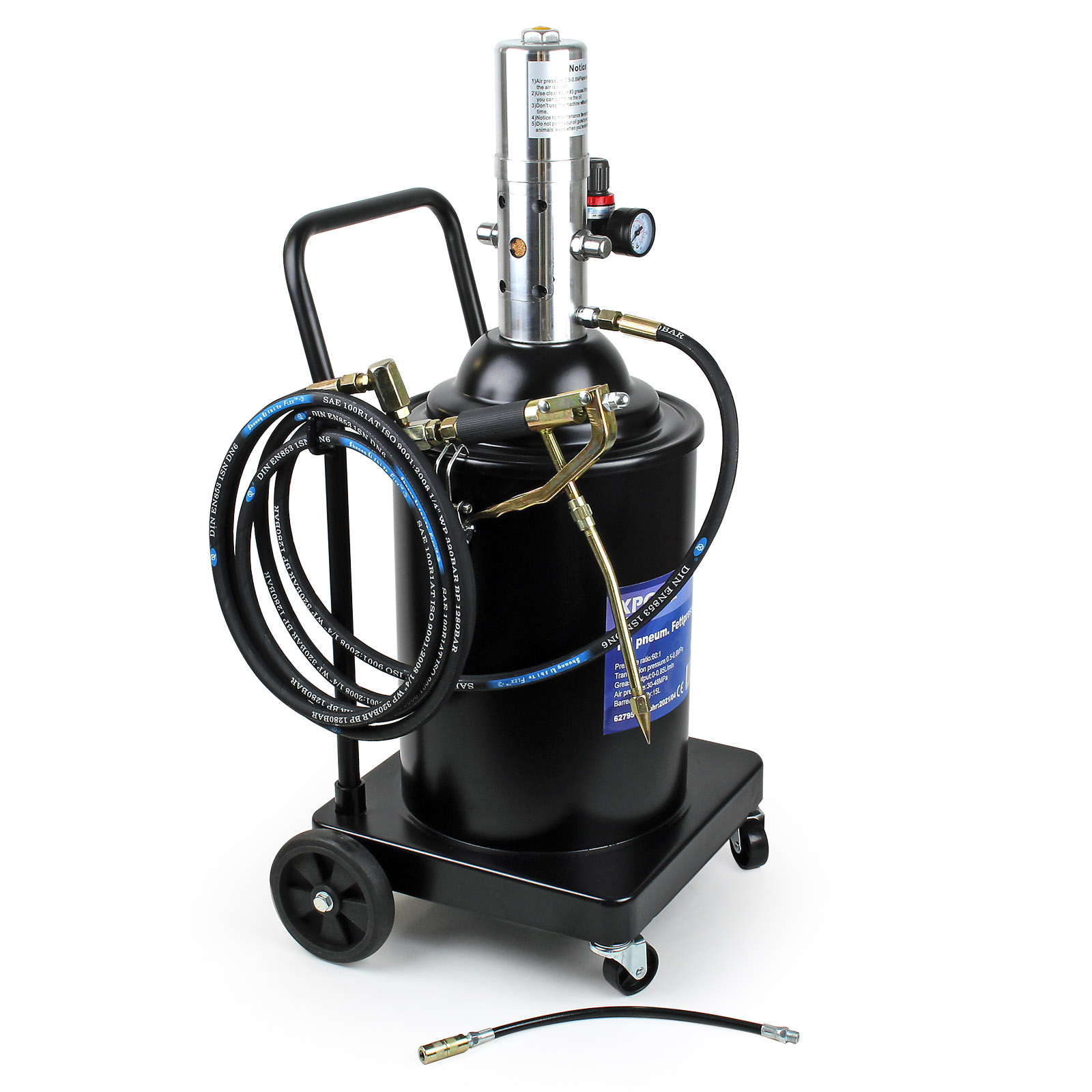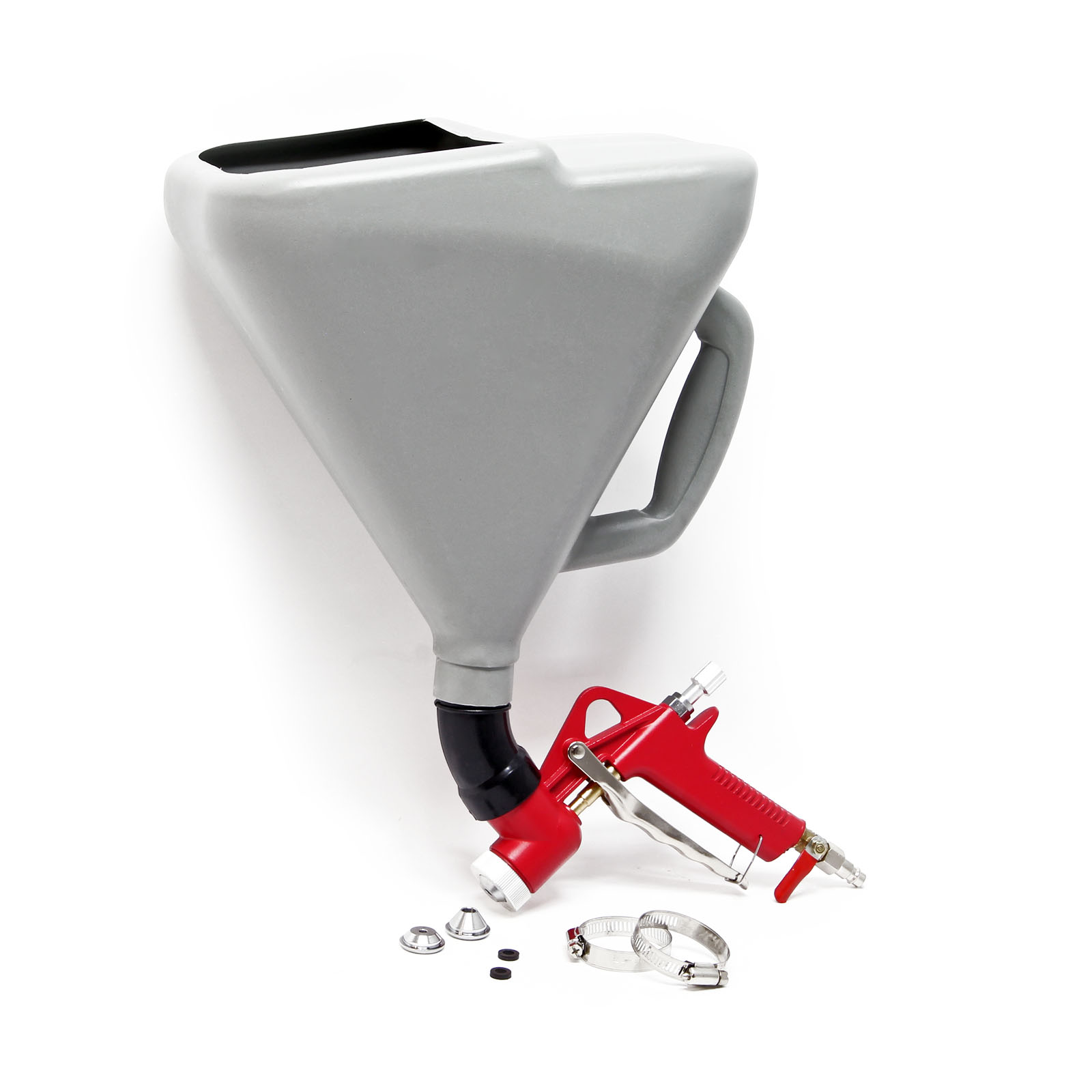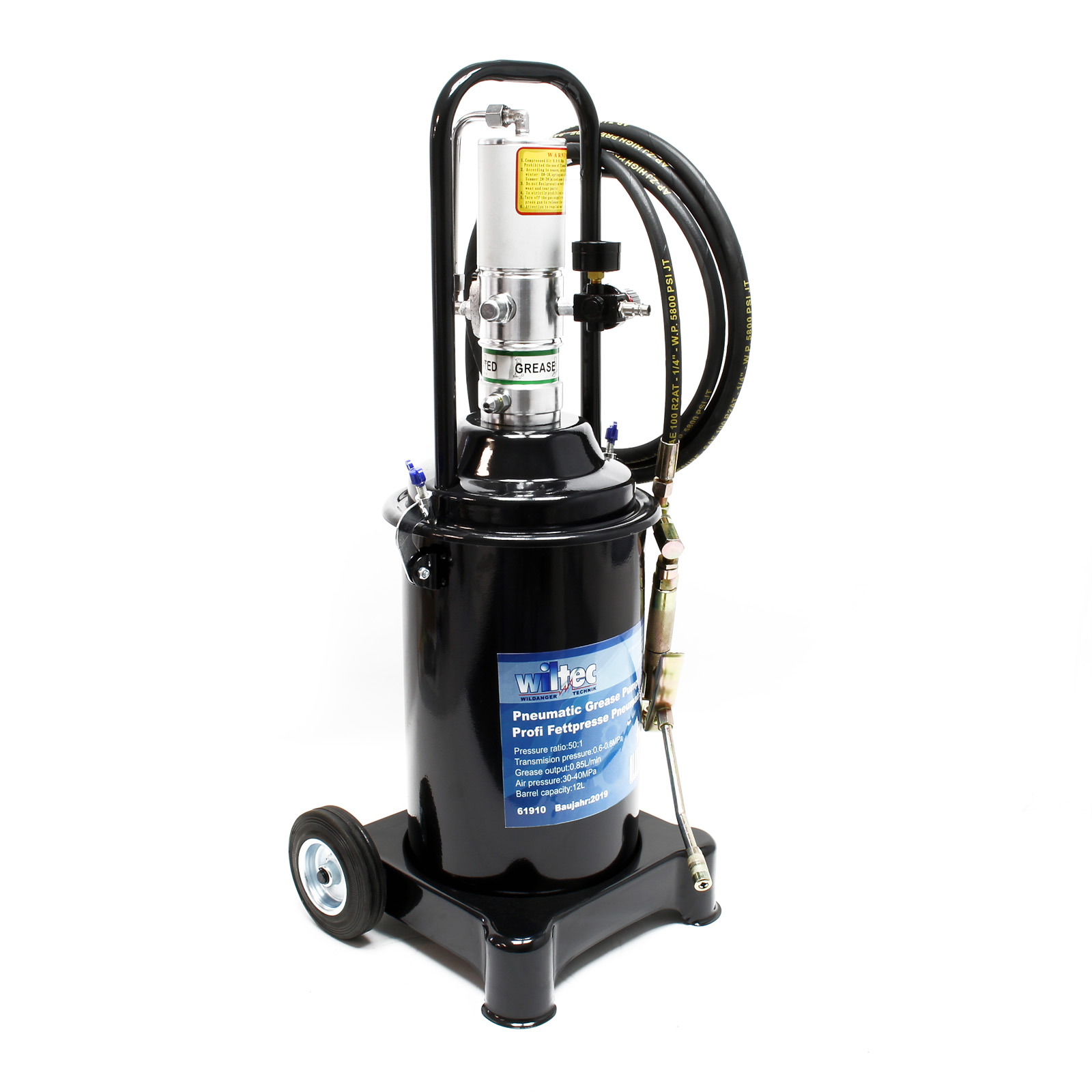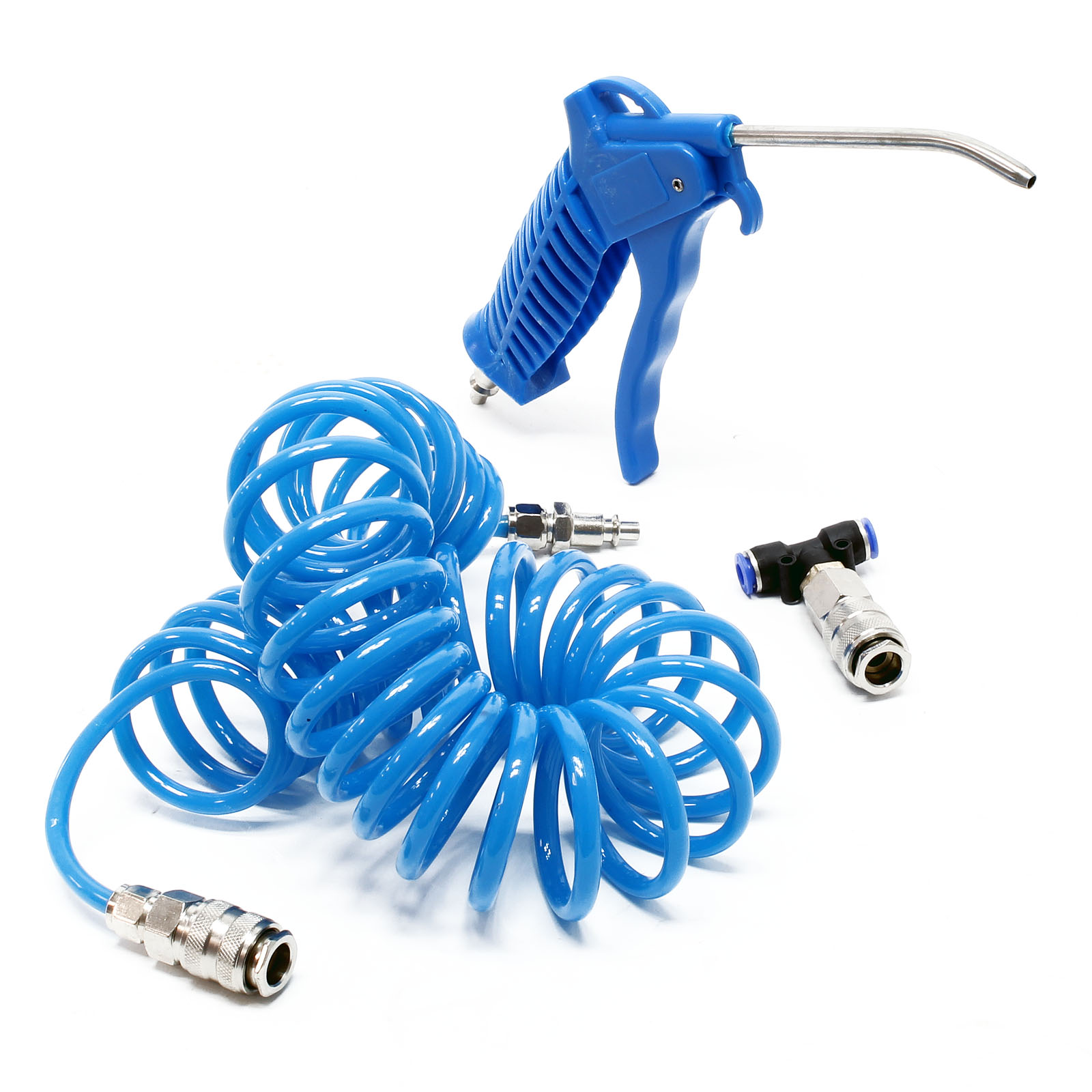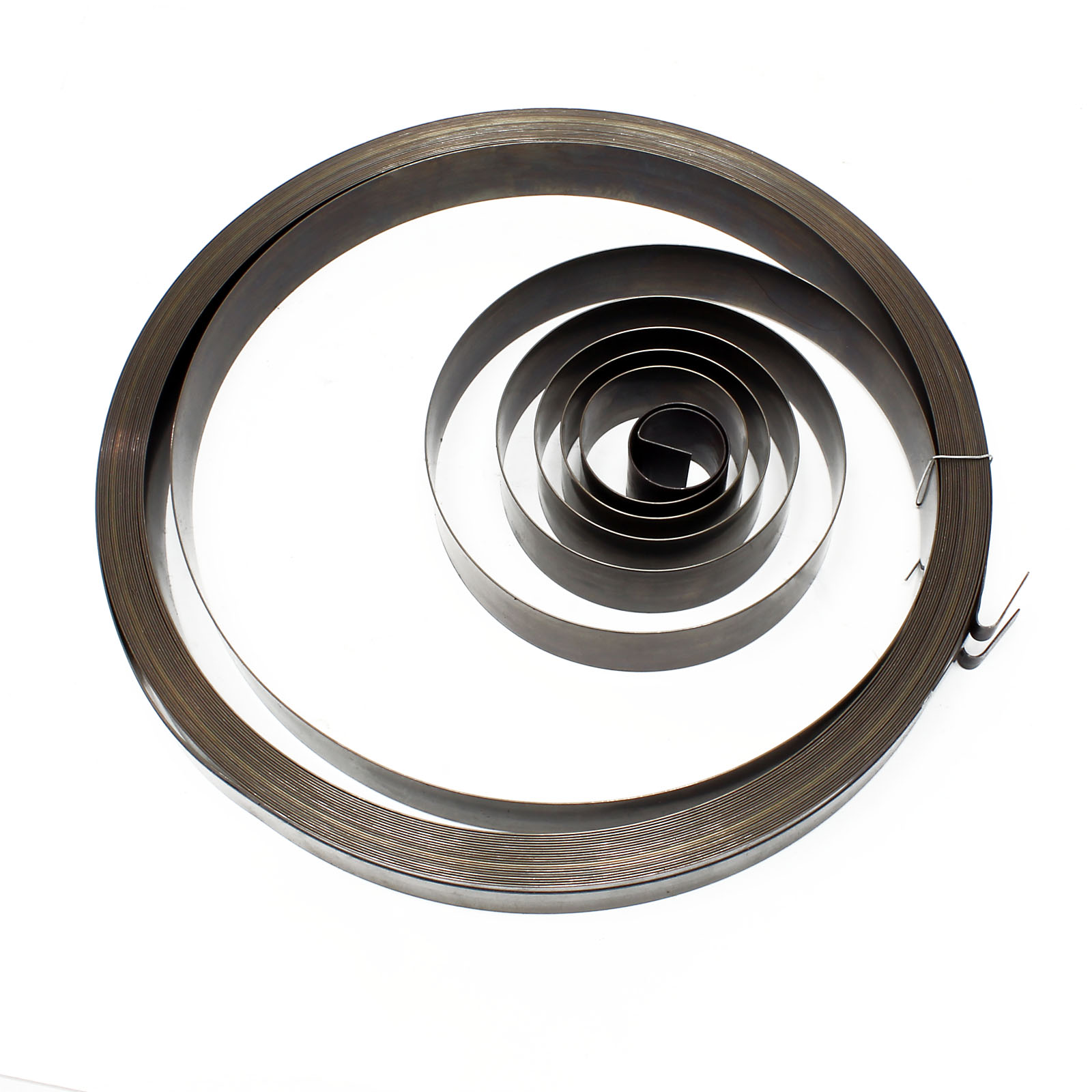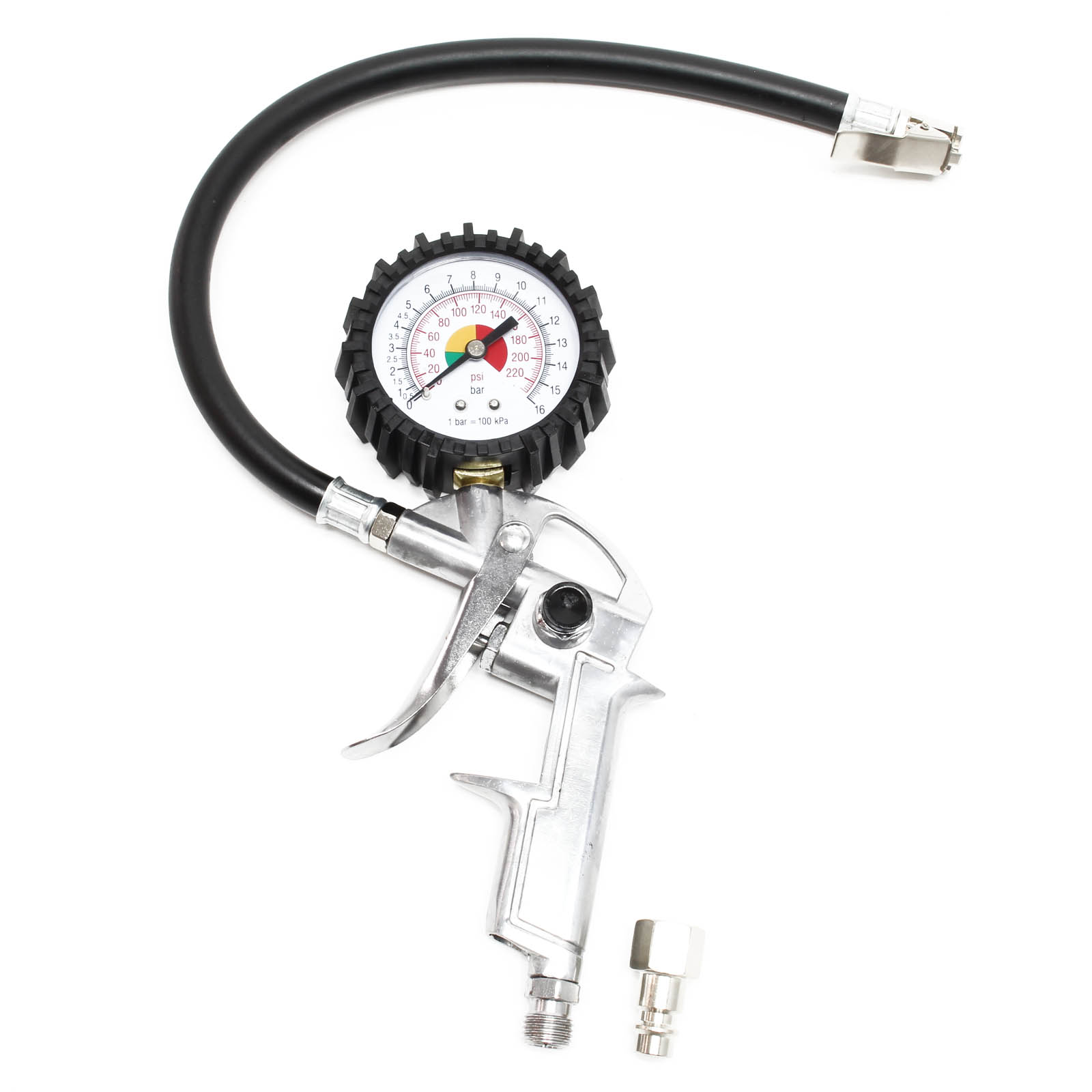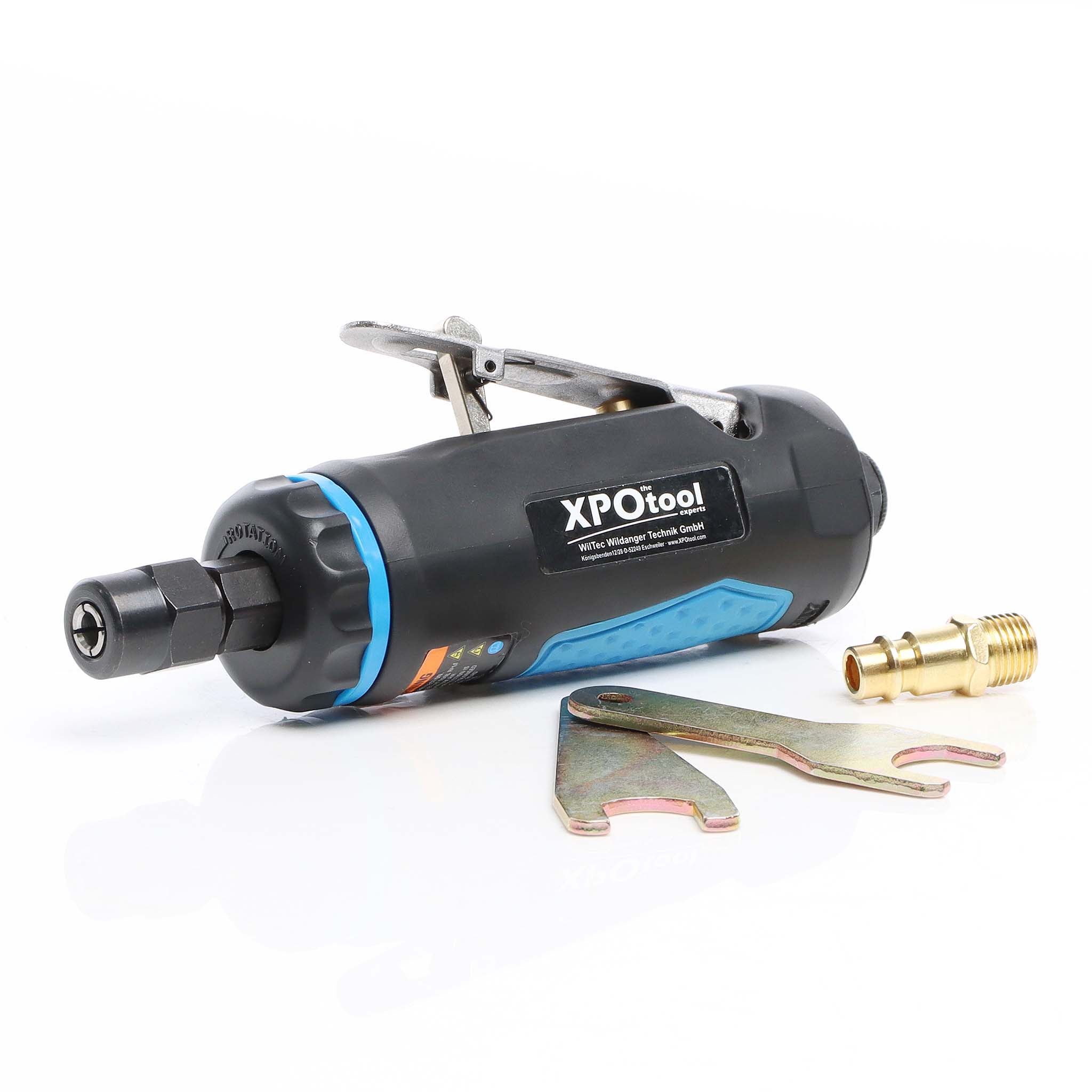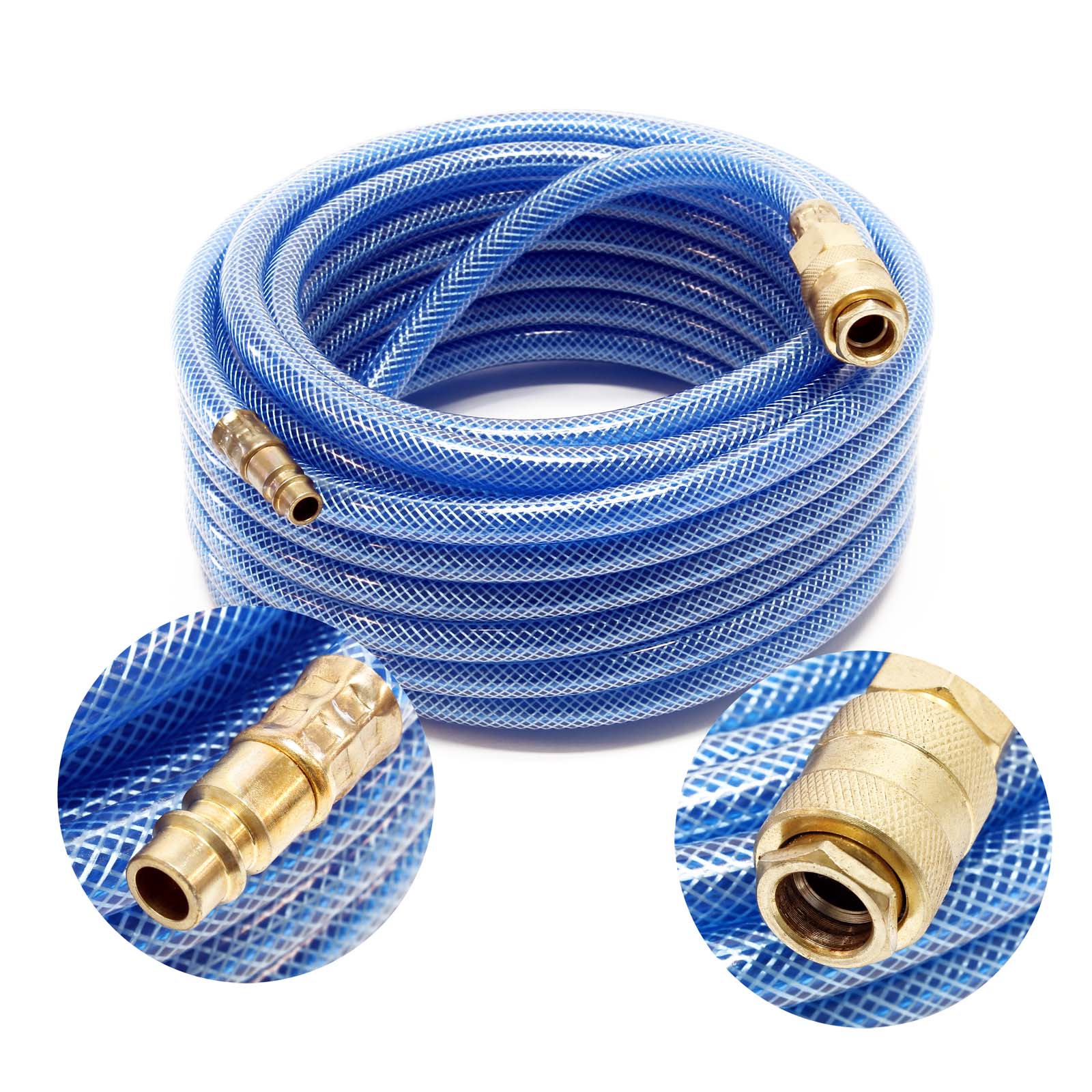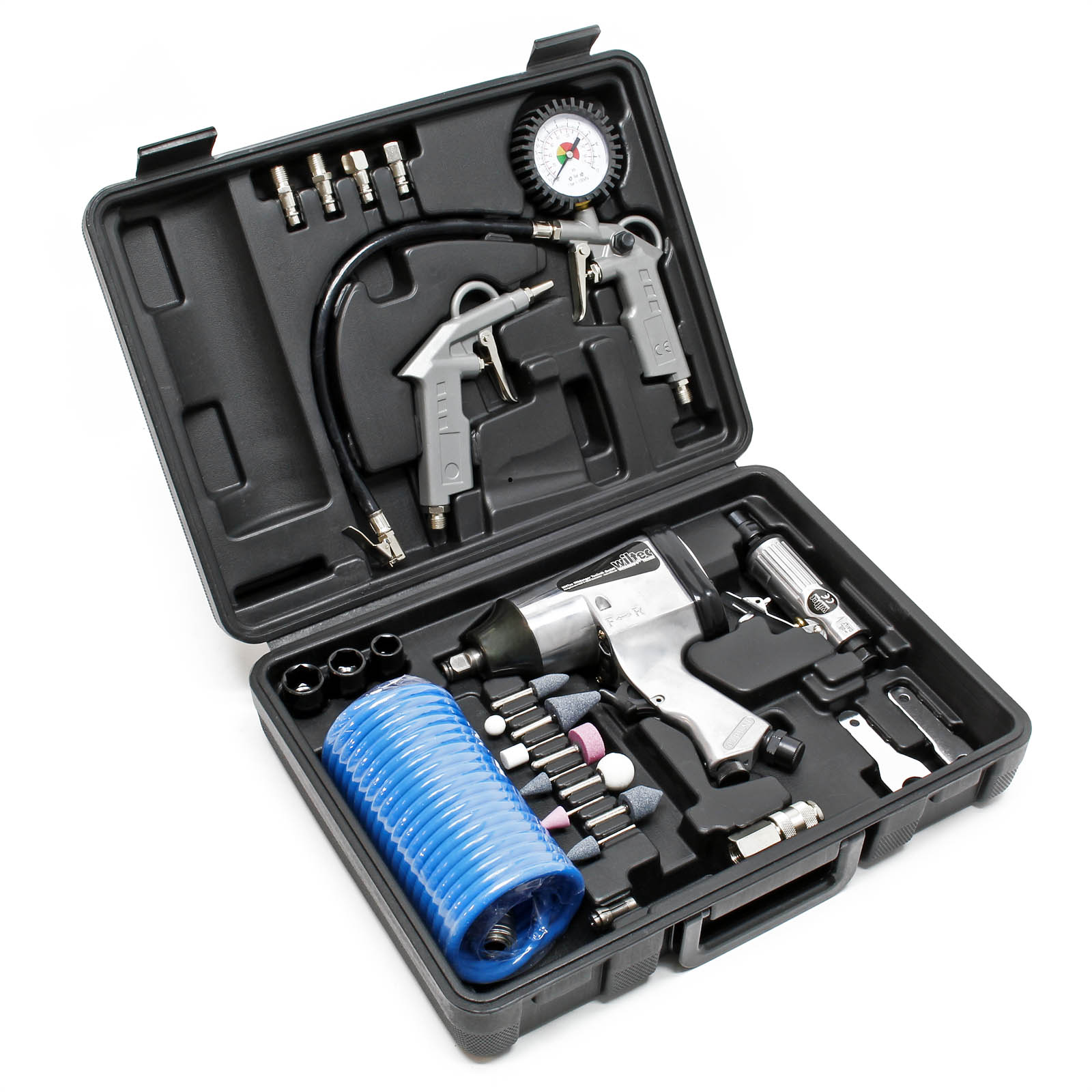Compressors & Air Tools
Available, delivery time: 2 - 3 days
• Maximum pressure: 7 bar
• Hose length round nozzle: 105 cm
• Hose length hook nozzle: 115 cm
• Capacity: 1100 ml
Available, delivery time: 2 - 3 days
• 2 manometers
• 2 air pressure quick-release couplings
• 1 security valve
• max. tolerable pressure: 8 bar
Available, delivery time: 2 - 3 days
• Inner diameter of hose 12 mm
• Hose length 20 m
• Compressed air plug NW 7.2 13 mm
• Working pressure 8 bar – bursting pressure 24 bar
• Material of hose: PVC
Available, delivery time: 2 - 3 days
• Flexible and sturdy
• Quick coupling
• For standard compressors
• Resistant to oil and gasoline
Content: 5 metre(s) (€1.75* / 1 metre(s))
Available, delivery time: 2 - 3 days
• Filter, oiler
• Water separator
• Up to 10 bar
• Filter connection 12,91 mm (¼″)
Available, delivery time: 2 - 3 days
• Flexible and sturdy
• Quick coupling
• For standard compressors
• Resistant to oil and gasoline
Content: 20 metre(s) (€0.59* / 1 metre(s))
Available, delivery time: 2 - 3 days
• Air cleaning
• 6.3–8 bar
• ¼″ (6,5 mm) quick coupler
• Incl. attachments
Available, delivery time: 2 - 3 days
• Inner Diameter Hose 12 mm
• Hose Length 15 m
• Compressed air plug NW 7.2 13mm
• Working pressure 8 bar/bursting pressure 24 bar
• Material Hose PVC Fabric
Available, delivery time: 2 - 3 days
• Pump with digital display bar, psi, kPa, kg/cm²
• Powered by two 1.5-V AAA batteries (incl.)
• Tool to inflate, deflate or check compressed air
• For car, motorcycle, bike, balls, air mattress
Available, delivery time: 2 - 3 days
• Recirculation locking
• Length: 30 m
Content: 30 metre(s) (€4.53* / 1 metre(s))
Available, delivery time: 2 - 3 days
• Hose reel with automatic winding mechanism
• 10 m hose plus 1 m connection hose
• Hose reel can be rotated up to 180°
• With ¼ inch (6.35 mm) quick connector
Available, delivery time: 2 - 3 days
• Fully automatic retraction
• 9 m hose
• PVC hose
• 180° rotatable
Available, delivery time: 2 - 3 days
• Working pressure: 2–8 bar
• Incl. 4 ceramic nozzles 4–7 mm
• Ergonomic design
• Robust and lightweight
Available, delivery time: 2 - 3 days
• Precise greasing of vehicles and machinery
• 400 cc cartridge for grease
• Air pressure from 4 – 6 bar
• Can be used with one hand
Available, delivery time: 2 - 3 days
• To perform precise and fast lubrication tasks
• Lubrication performance: 0,85 litres per minute
• 15–16 litres tank or lubricating grease stock
• Mobile and compact device with 91×40×39cm
Available, delivery time: 2 - 3 days
• Large hopper with a capacity of 7.5 litres
• 3 different nozzle sizes
• ¼″ air pressure quick-release fastener
• Continuously adjustable air pressure
Available, delivery time: 2 - 3 days
• Precise lubrication of vehicles and machines
• 12 liter tank for grease
• Compressed air from 6 to 8 bar
• Pressure ratio of 50:1
Available, delivery time: 2 - 3 days
• Air pressure max. 10 kg/cm²
• Air nozzle made of metal
• Rubber handle
• Connections fitted with quick couplers
Available, delivery time: 2 - 3 days
Available, delivery time: 2 - 3 days
• Universally applicable
• With manometer
• Pressure range: 0–16 bar
• 6,5 mm (¼″) quick connector
Available, delivery time: 2 - 3 days
• For grinding, milling, polishing, deburring, etc
• With aluminium housing and non-slip coating
• Air outlet on the backside for dust-free working
• 6.3bar working pressure and 22000rpm max. speed
Available, delivery time: 2 - 3 days
• Including sockets and hex key
• With an optional handle for ideal grip
• Max. torque of 2380 Nm
• Practical tool box for safe transportation
Available, delivery time: 2 - 3 days
• Flexible and sturdy
• Quick coupling
• For standard compressors
• Resistant to oil and gasoline
Content: 10 metre(s) (€0.99* / 1 metre(s))
Available, delivery time: 2 - 3 days
• Including a wide range of accessories
• Attachments for a wide variety of applications
• Compressed-air supply via quick coupler
• Practical tool box for safe transportation


